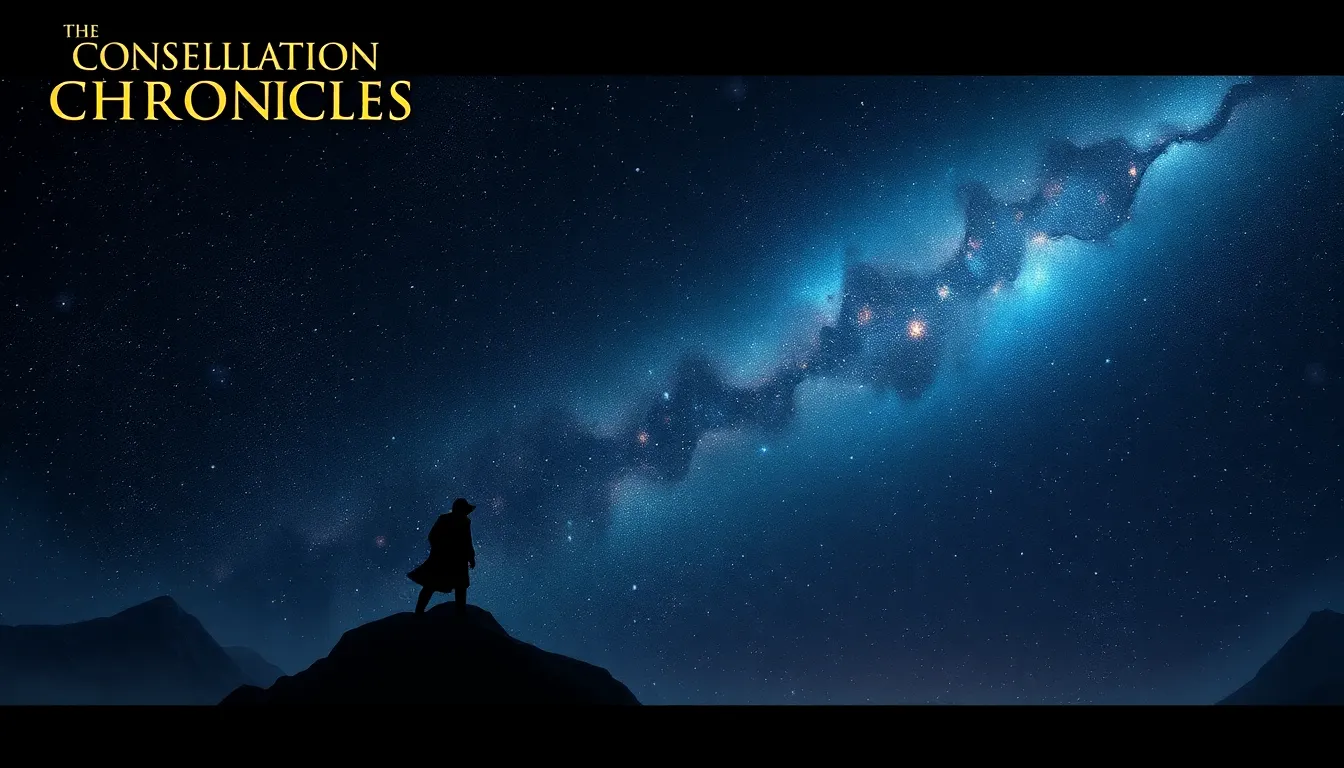Star-Crossed Tales: The Myths Behind the Constellations
I. Introduction to Constellations
Constellations are officially recognized patterns of stars that have been grouped together by various cultures throughout history. They serve not only as a means of identifying and navigating the night sky but also as a canvas for storytelling and myth-making.
Historically, constellations played a vital role in navigation, allowing ancient sailors and travelers to find their way across vast oceans and unfamiliar lands. Beyond navigation, they provided a framework for storytelling, where cultures shared tales of heroes, gods, and celestial events, embedding their values and beliefs into the very fabric of their society.
This exploration delves into the myths associated with constellations, uncovering the stories that have shaped human understanding of the cosmos and our place within it.
II. The Origins of Constellation Myths
Constellation myths trace their origins back to some of the earliest civilizations, each contributing unique perspectives and narratives to the night sky.
A. Ancient civilizations and their contributions to constellation lore
- Mesopotamian influences: The Babylonians were among the first to map the stars, associating them with their deities and myths, many of which influenced later Greek stories.
- Greek and Roman adaptations: Greek astronomers like Ptolemy cataloged stars and constellations, adapting earlier myths and weaving them into their own cultural narratives.
These civilizations intertwined astronomy with mythology, creating a rich tapestry of stories that explained natural phenomena and human existence.
B. The role of astronomy in mythology
Astronomy has historically served as a bridge between the cosmos and human experience, with celestial events often interpreted as omens or divine messages. Myths helped to contextualize these observations, providing a narrative framework for understanding the universe.
C. Cultural variances in constellation stories
Different cultures have their own interpretations of the same stars, leading to a plethora of myths that reveal diverse human experiences and values. For instance, the constellation Orion is viewed as a hunter in Western mythology but may represent different figures in other cultures.
III. Key Constellations and Their Myths
A. Orion: The Hunter and His Tragic Fate
Orion, one of the most recognizable constellations, is often depicted as a great hunter. According to Greek mythology, he was a giant who boasted he could kill any animal on Earth. This arrogance led to his downfall, as he was ultimately killed by a scorpion sent by the goddess Artemis.
B. Cassiopeia: The Vain Queen and Her Punishment
Cassiopeia, represented by a W-shaped constellation, was a queen known for her beauty and vanity. She boasted that she and her daughter Andromeda were more beautiful than the Nereids, the sea nymphs. As punishment, Poseidon sent a sea monster to ravage her kingdom, leading to Andromeda’s sacrifice.
C. Ursa Major and Ursa Minor: The Bear and Her Cubs
These two constellations tell the story of Callisto, a nymph transformed into a bear by Hera. Ursa Major represents Callisto, while Ursa Minor symbolizes her son, Arcas. The tale emphasizes themes of motherhood, transformation, and the consequences of divine jealousy.
D. Scorpius: The Scorpion and the Huntress
Scorpius represents the scorpion sent to kill Orion, a story that highlights the interconnectedness of celestial myths. The constellations of Scorpius and Orion are often seen in opposition in the sky, reflecting their tumultuous relationship.
IV. The Role of Myths in Understanding Human Nature
A. Symbolism in constellations and their myths
The stories behind constellations often symbolize human traits and experiences, such as bravery, vanity, and the struggle against fate. These myths allow us to explore complex aspects of human nature through accessible narratives.
B. Lessons and morals derived from constellation stories
Many constellation myths contain moral lessons or warnings about hubris, love, and sacrifice. For instance, the story of Cassiopeia reminds us of the perils of vanity, while Orion’s tale reflects the consequences of arrogance.
C. Psychological interpretations of star myths
Psychologists have studied how these myths resonate with our innate desires and fears, suggesting that they serve as a means of understanding our psyche. The archetypes found in these stories can offer insights into our behaviors and motivations.
V. The Influence of Constellation Myths on Art and Literature
A. Depictions of constellations in ancient art
Throughout history, artists have drawn inspiration from constellations, depicting them in sculptures, pottery, and paintings. These representations often served to honor the myths and their cultural significance.
B. Modern literary references to constellation myths
Contemporary literature frequently references constellation myths, using them as metaphors for human experiences. Authors weave these celestial stories into narratives to enrich their themes and character development.
C. The impact of these myths on popular culture
Constellation myths have permeated popular culture, inspiring films, music, and other forms of entertainment. From movies that depict the night sky to songs that reference constellations, these stories continue to captivate audiences.
VI. Constellations in Different Cultures
A. Comparison of Western and Eastern constellations
Western and Eastern cultures often interpret the same stars in vastly different ways. For instance, while Western cultures see Orion as a hunter, Chinese astronomy associates the same stars with various mythical figures and animals.
B. Indigenous interpretations of the night sky
Indigenous cultures around the world have their own rich traditions of stargazing and constellation stories. These interpretations often carry deep spiritual significance and reflect the relationship between the people and their environment.
C. Mythical connections in African and Native American cosmologies
African and Native American cultures present unique mythologies surrounding the stars. For example, many African tribes have intricate stories connecting constellations to their ancestors, while Native American tribes often see the stars as guides or lessons from nature.
VII. The Science Behind the Stars
A. How constellations are formed and recognized
Constellations are formed based on the apparent positions of stars as seen from Earth. While they are not physically related, the patterns help humans identify and navigate the night sky.
B. The difference between constellations and asterisms
Constellations are officially recognized groups of stars, while asterisms are unofficial star patterns within a constellation, such as the Big Dipper within Ursa Major.
C. The role of modern astronomy in myth reinterpretation
Modern astronomy has provided new insights into the stars, leading to a reinterpretation of some myths. Discoveries about the life cycles of stars and their compositions have enriched our understanding of these celestial bodies.
VIII. Constellations and Navigation: A Historical Perspective
A. The use of constellations in ancient navigation
Ancient navigators relied heavily on constellations to guide their journeys across the seas. Stars like Polaris (the North Star) became critical reference points for direction.
B. Key historical figures in navigation and their reliance on the stars
Figures such as Polynesian navigators and explorers like Columbus used the night sky to chart their courses, demonstrating the practical application of constellation knowledge.
C. The decline of celestial navigation with technological advances
With the advent of modern navigation tools such as GPS, the reliance on constellations for navigation has diminished. However, the historical significance of these celestial guides remains a testament to human ingenuity.
IX. The
https://www.youtube.com/watch?v=ohGEGATpTVA



